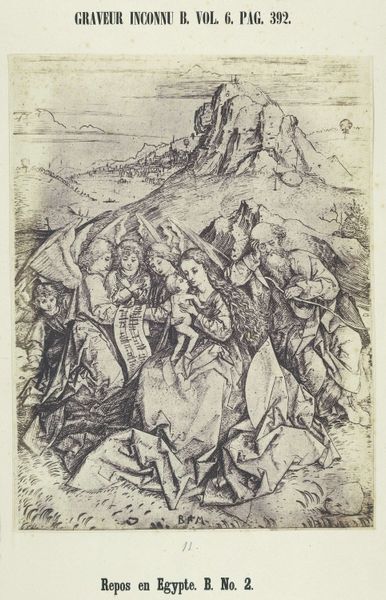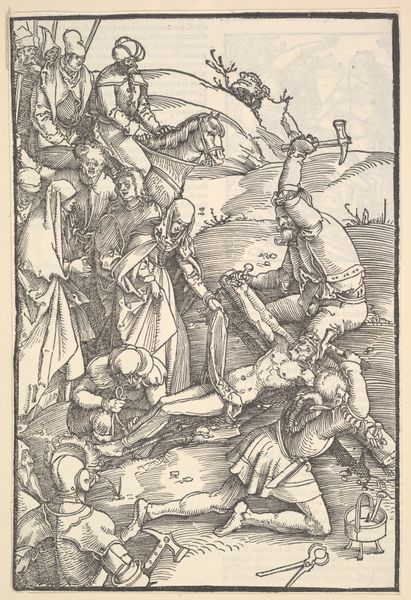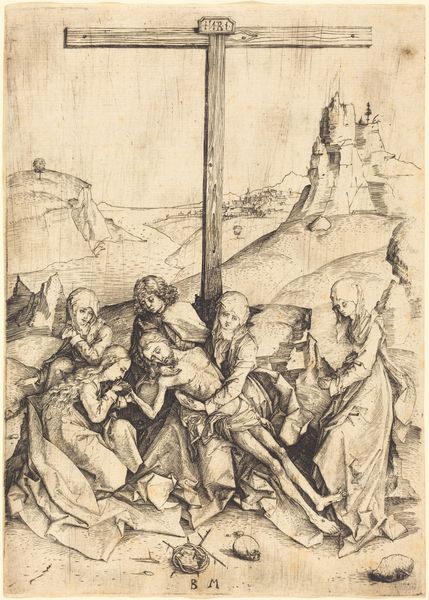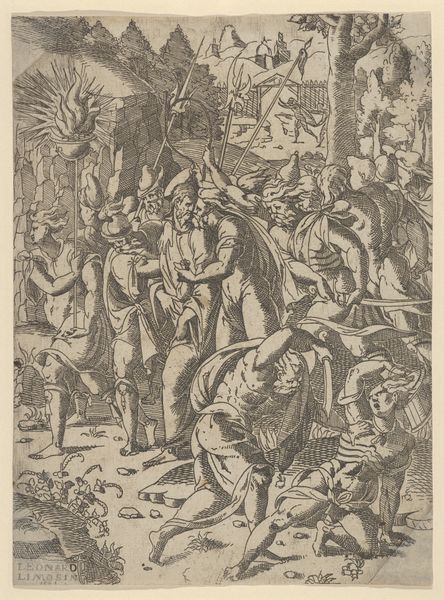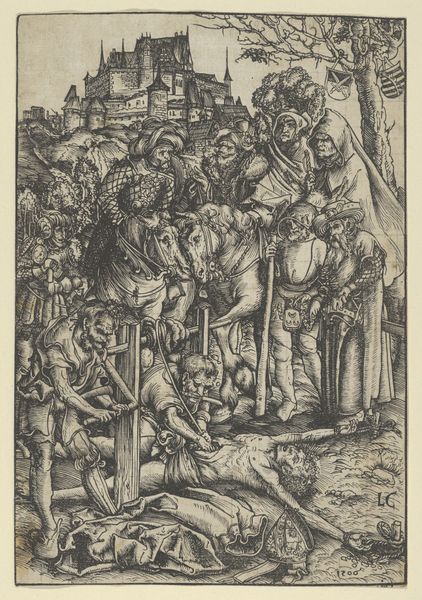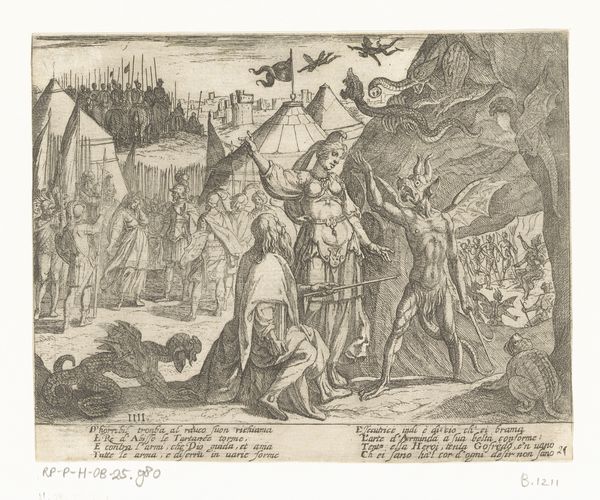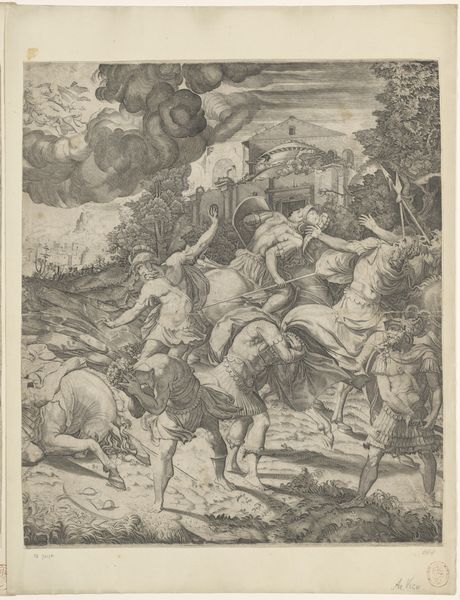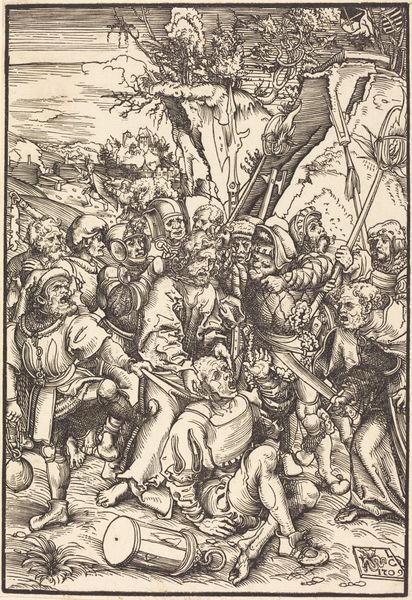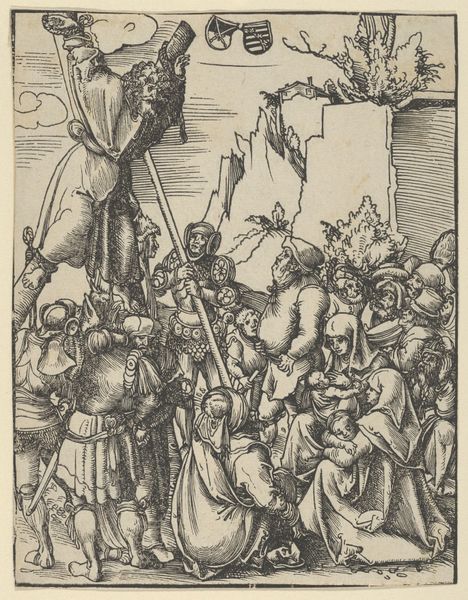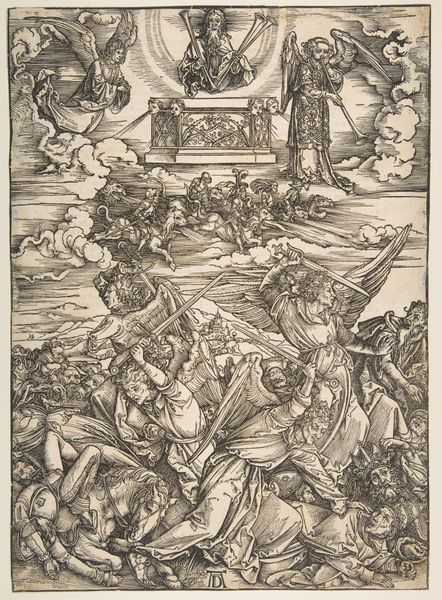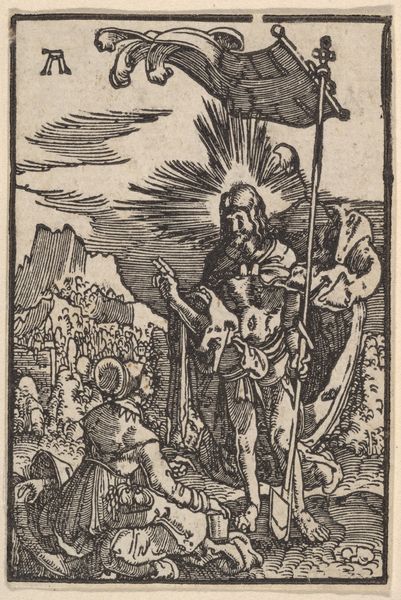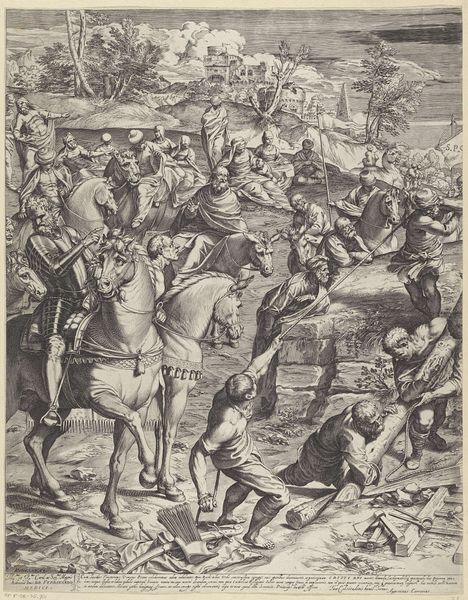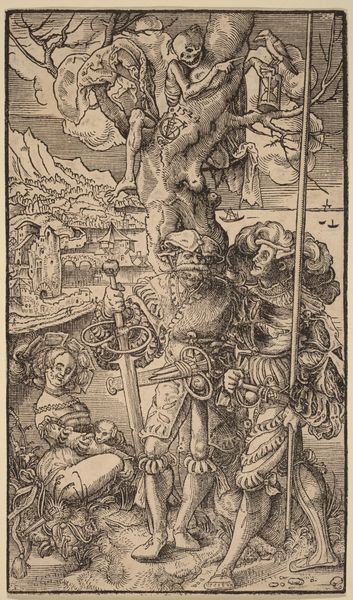
print, engraving
#
ink drawing
#
narrative-art
# print
#
pen illustration
#
landscape
#
figuration
#
line
#
pen work
#
history-painting
#
northern-renaissance
#
engraving
Copyright: National Gallery of Art: CC0 1.0
Editor: Here we have Master BM's "The Rest on the Flight into Egypt," dating from around 1480 to 1490, rendered as a print—an ink drawing or engraving, it seems. There’s such serenity in Mary’s face, despite the fraught narrative it depicts. What strikes you about this piece? Curator: The power of this work resides in its depiction of sanctuary within a context of forced migration. Consider the Holy Family as refugees. How might this image have resonated with those experiencing displacement during the Northern Renaissance, a time of considerable social upheaval and religious conflict? Editor: So you're seeing parallels between their flight and broader historical struggles? Curator: Precisely. The detailed landscape, rendered with such fine lines, creates both a sense of place and a backdrop of potential danger. Note also the presence of the angels. Are they simply celestial protectors, or do they represent a broader societal support system, perhaps a network of aid for those in need? The musical notation could hint at that as well. Editor: That's a fascinating point – thinking of the angels less as divine and more as… community support? Curator: And Joseph! Note his almost weary posture. It speaks to the physical and emotional toll of displacement, the constant negotiation of borders both physical and metaphorical. In what ways can we connect Joseph’s expression of distress with the challenges faced by contemporary migrants and refugees? Editor: Looking at it now, I’m realizing I’d only focused on Mary’s apparent peace. Seeing the work through the lens of displacement adds layers of complexity. Curator: Absolutely. By situating this work within the historical and social contexts of both its creation and our present, we can start discussions about identity, belonging, and our shared humanity. Editor: Thank you; this conversation has illuminated how a historical piece can offer powerful commentary on contemporary social justice concerns.
Comments
No comments
Be the first to comment and join the conversation on the ultimate creative platform.
